Anti-nuclear protesters and New Hampshire State Police clash in hand-to-hand combat with mace and billy clubs during a protest at the Seabrook, N. H. nuclear power plant (© Michael Maher, The Lowell (Ma.) Sun).
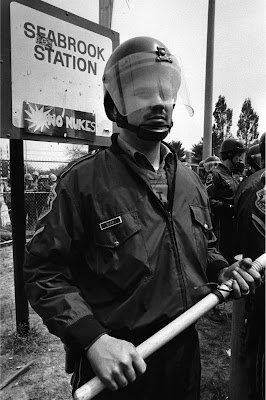
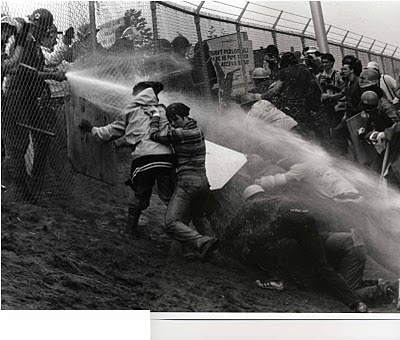
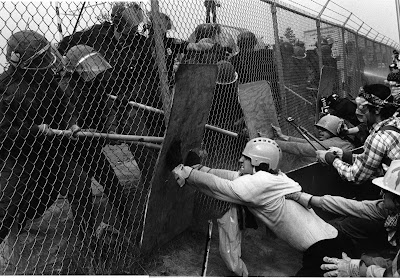
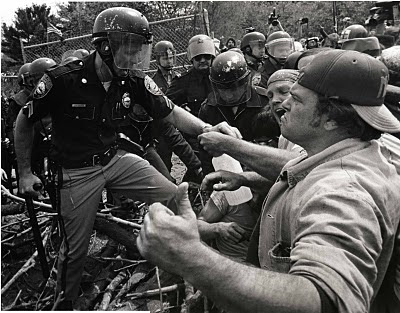
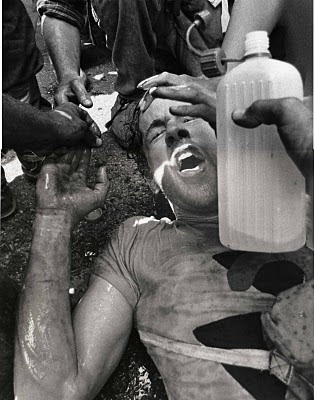
The Photos:
In the late 1970s, there was widespread fear of the proposed Seabrook, N. H. nuclear power plants being built close to a densely populated area, because of the radiation danger, and of the ocean pollution risks it presented. (Only one plant was eventually built and the company owners ended up in bankruptcy.) As Seabrook became a national symbol of the struggle against nuclear power’s risks, protesters repeatedly descended on the plant over several years to confront local and state police authorities.
Close to 1,000 demonstrators were expected, so news reporters and photographers flocked to capture the drama of these skirmishes, since there’s nothing that attracts cameras like pre-arranged, guaranteed news action photos. The protest organizers planned for several waves of protesters to attack the fences in front and on one side, in an attempt to enter the compound where the power plant was under construction. They didn’t expect to succeed since the police were armed and well mobilized, guided by informers among the protesters and news media, but the organizers counted on the events generating favorable news coverage for their cause.
The first group tried cutting the side fence with wire-cutters, but police inside the fence squirted pepper spray at protesters’ eyes, repelled them with high-pressure water hoses, and smashed their hands with billy clubs when they touched the fence. I primarily stood back photographing with a long lens, but occasionally moved in closer to get better action pictures. The second wave of protesters at the front gate piled a large stack of tree branches and debris to prevent authorities from entering or leaving, but the police came out to remove the debris and fended off the protesters, who retreated after a few billy club blows or when the pepper spray temporarily blinded them. The only effective way for me to photograph this was by wading into the midst of the protesters, and throughout the battle, I kept focusing and shooting, and barely avoided being clubbed myself. During one heated moment, after I ventured deep into the skirmish, I held up a second camera with one hand to show I was with the press, so the police officers wouldn’t billy club me.
However, the protesters won the media battle because the powerful pictures were shot from the protesters’ perspective outside the fence, with the police appearing to come at them menacingly as the aggressors. To counter this in future protests, the police brought some media representatives inside the fence to make the protesters look more like the aggressors.
3 Tips:
1) Stand back with a long lens to photograph fierce protests.
2) Be prepared to photograph from up close at times, but avoid being hit or pepper-sprayed.
3) If you are shooting in the midst of protesters, provide a way for authorities to easily identify you as a photographer.
Those look like ones of the attempted occupation of 10/79. If so, they are the first photos I've seen of the action that day.
ReplyDeleteWere they taken on the north side of the site?
I was on the south.
This was from 1980. Photos #1 and #4 were shot at the front gate, and the others on the South Side.
ReplyDelete